人教高中英语必修4 Unit 4 Unit 4 Body language reading课件(共27张PPT)
文档属性
| 名称 | 人教高中英语必修4 Unit 4 Unit 4 Body language reading课件(共27张PPT) |  | |
| 格式 | zip | ||
| 文件大小 | 3.5MB | ||
| 资源类型 | 教案 | ||
| 版本资源 | 人教版(新课程标准) | ||
| 科目 | 英语 | ||
| 更新时间 | 2020-05-29 17:40:55 | ||
图片预览

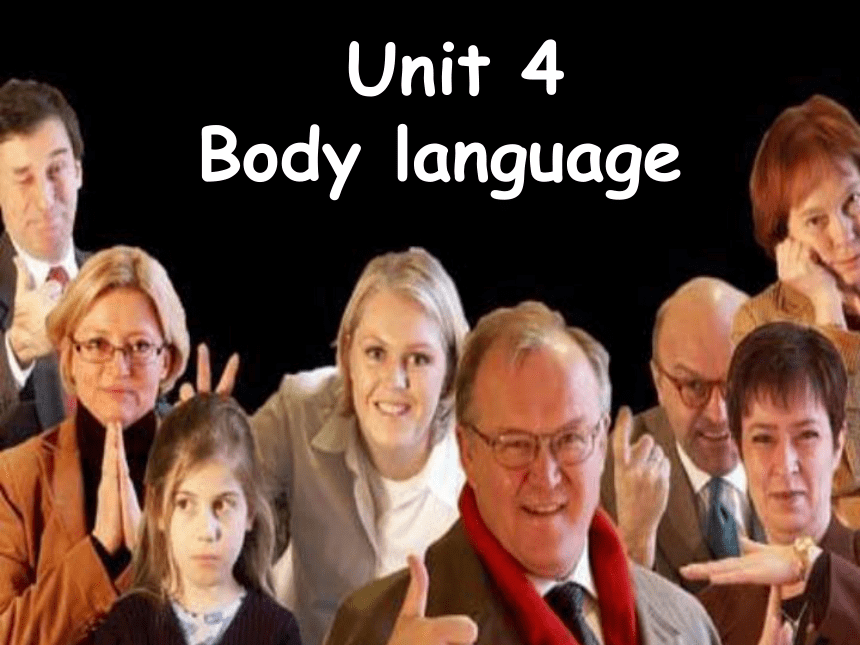
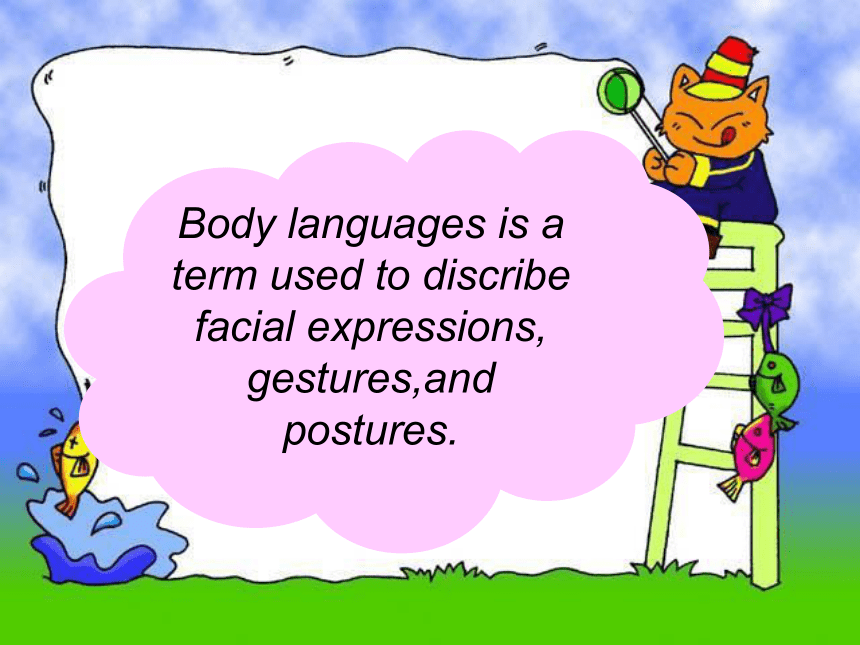
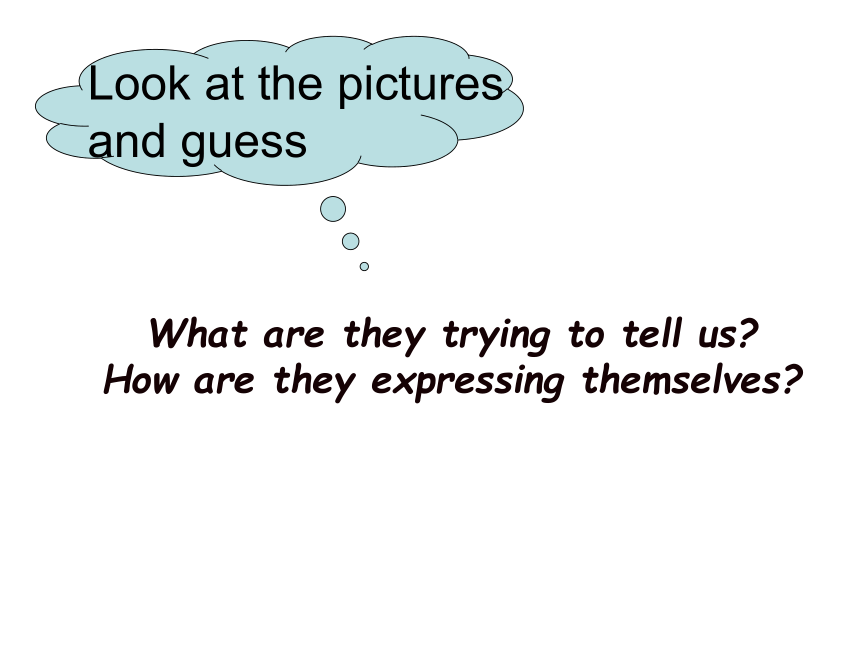
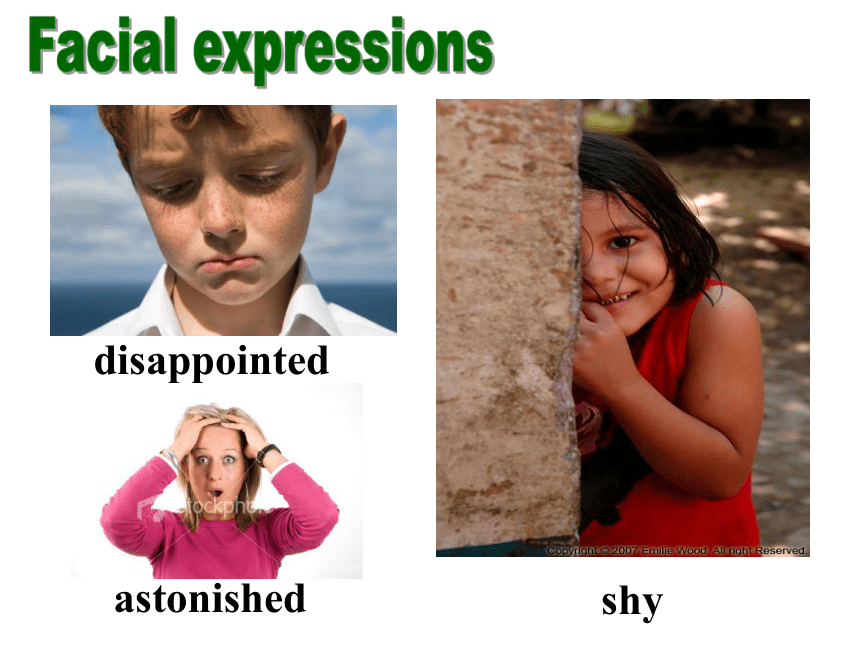
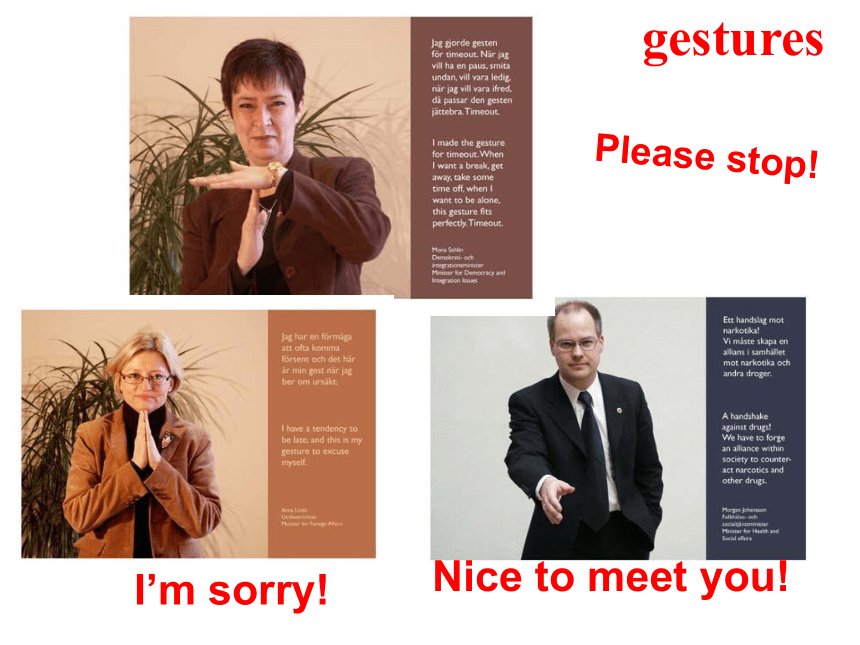
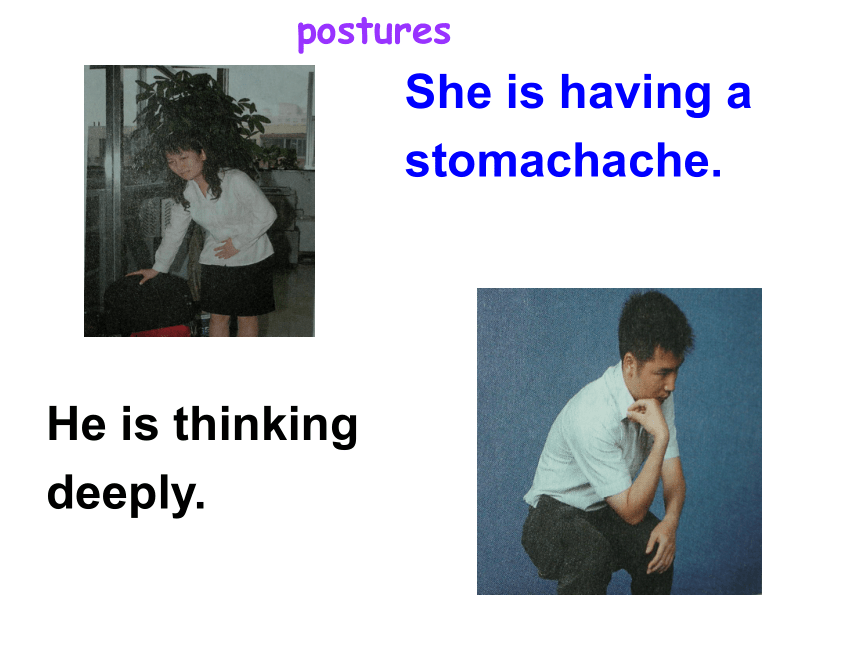
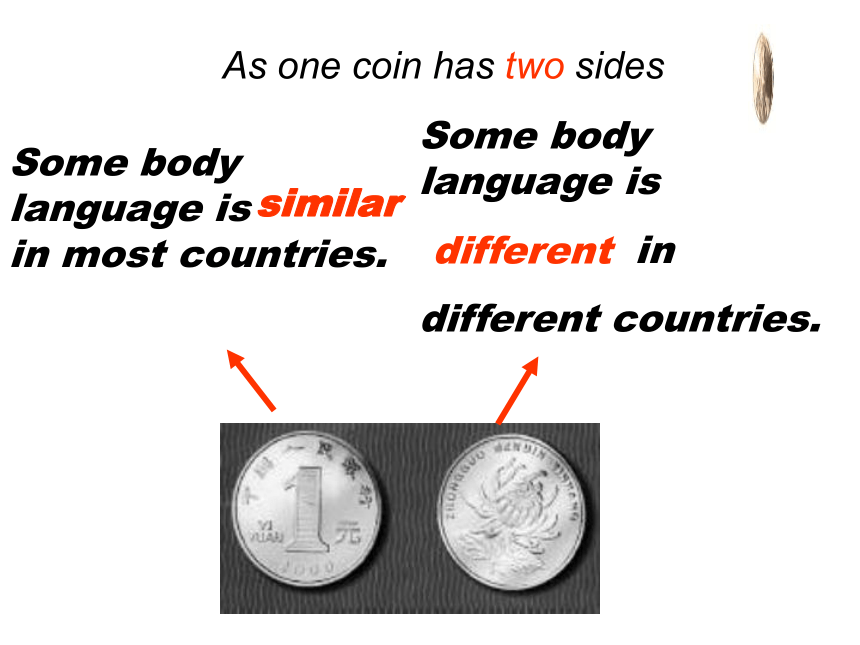
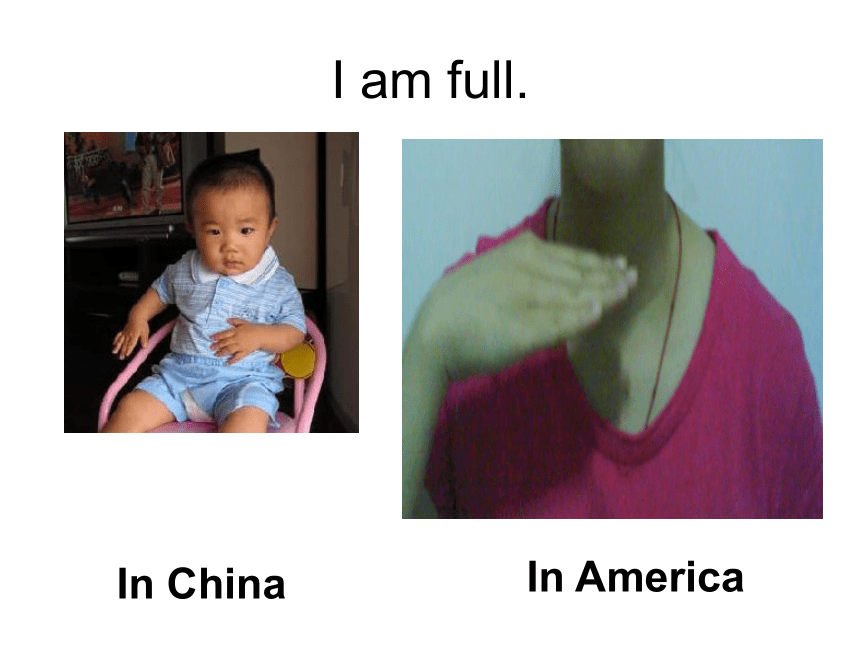
文档简介
(共27张PPT)
Unit
4
Body
language
Body
languages
is
a
term
used
to
discribe
facial
expressions,
gestures,and
postures.
What
are
they
trying
to
tell
us?
How
are
they
expressing
themselves?
Look
at
the
pictures
and
guess
disappointed
shy
astonished
Please
stop!
Nice
to
meet
you!
I’m
sorry!
gestures
He
is
thinking
deeply.
She
is
having
a
stomachache.
postures
Some
body
language
is
in
most
countries.
As
one
coin
has
two
sides
Some
body
language
is
in
different
countries.
different
similar
I
am
full.
In
China
In
America
Come
here!
In
China
In
America
To
be
shamed
In
China
In
America
In
America,
people
can
use
this
gesture
for
taking
a
lift
in
strange
places.
This
gesture
usually
means
you
are
great
or
wonderful.
Communication:
No
problem?
While
reading,
choose
the
right
main
idea
of
the
text
Which
conclusion
can
you
draw
from
this
passage?
A.Body
language
is
very
important.You
can
use
body
language
to
communicate
with
people
from
foreign
countries
without
any
difficulty
even
if
you
don’t
know
their
language.
B.When
you’re
in
a
foreign
country,it’s
very
important
for
you
to
know
what
they
speak.It
doesn’t
matter
whether
you
know
the
meaning
of
gestures
and
movements
of
the
people
in
their
country.
C.When
you
are
in
a
foreign
country,using
body
language
in
a
correct
way
is
important
even
though
you
know
the
language
they
speak
very
well,for
it
can
make
your
stay
in
the
country
easy
and
comfortable.
While
reading,
please
try
to
divide
the
whole
passage
into
four
parts
and
match
the
main
idea.
Part
1.
(para.
1)
Part
2
(para.
2
&3
)
Part
3.
(para.
4
)
Part
4.
(para.
5)
The
author
was
sent
to
Capital
International
Airport
to
meet
this
year’s
international
students.
Examples
of
cultural
“body
language”.
Different
people
have
different
body
languages.
Summary
of
body
language.
Read
it
by
yourself.
1.Who
are
the
people
mentioned
in
the
passage?
2.Where
are
they
from?
China
Tony
Garcia
Columbia
Julia
Smith
Britain
Akira
Nagata
Japan
George
Cook
Canada
Ahmed
Aziz
Jordan
Darlene
Coulon
France
another
student
and
I
people
country
Find
out
the
two
cultural
mistakes
in
Para2
Tony
Garcia
Julia
Smith
The
first
mistake
(Columbia
)
(Britain)
He
approached
Julia,
________
_____
_________and
_______
her
on
the
________.
She
______
________
appearing
_________
and
put
up
her
hands,
as
if
___
_______.
shoulder
touched
her
kissed
cheek
stepped
back
surprised
in
defence
The
second
mistake
Akira
Nagata
(Japanese)
George
Cook
(Canada)
He
________
his
hand
________
to
the
Japanese
student.
He
________
so
his
nose
________George’s
_______
________.
bowed
touched
moving
hand
reached
out
Read
it
by
yourself.
_________others
closely
and
are
more
likely
to__________.
Do
not
stand
_________to
others
or
touch
________
when
they
meet.
Bow
Shake
hands
Fill
in
the
table
according
to
Para4:
very
close
strangers
Approach
touch
them
People
in
the
country/area
Ways
to
greet
each
other
English
people
People
from
Spain,
Italy
and
South
American
countries
Japanese
Most
people
around
the
world
1.
Body
language
in
some
countries
is
good
while
some
in
others
is
bad.
2.
All
members
of
a
culture
behave
in
the
same
way.
3.
Learning
English
well
can
certainly
help
avoid
difficulties
in
today’s
world
of
cultural
crossroads.
True
or
false?
None
of
these
actions
is
either
Not
all
Studying
international
customs
good
or
bad.
Para5:
Read
it
silently.
1.
Is
the
author
of
this
passage
male
or
female?
How
do
you
know
?
???
The
author
is
male.
Ahmed
Aziz
will
not
shake
hands
with?
women,
but
he
shakes
hands
with
the
author.
2.What
were
the
two
mistakes
that
the
author
noticed??
He
noticed
that
the
Colombian
man
kissed
the
British
woman,
but
in
her
culture,
a
kiss
from
a
stranger
is
not
acceptable.
He
also
noticed
that
the
Japanese
man
bowed
just
as
the
Canadian
man
started
to
shake
hands,
so
one
man’s
nose
touched
the
other
man’s
hand.?
3.
Who
seemed
to
prefer
to
keep
more
physical
distance
from
others?
Who
seemed
to
prefer
closer
physical
distance
?
???
The
British
woman,
Julia,
and
probably
the
Canadian
man,
George,
seemed
to
prefer
to
keep
more
physical
distance
from
others.
The
Colombian
man,
Tony,
and?
the
Jordanian
man,
Ahmed,
seemed
to
prefer
closer
physical?
distance
.?
4.
Did
any
students
have
similar
greeting
customs??
If
so,
which
ones?
????
Yes.
Tony
from
Colombia
and
Darlene
from
France
had
a
similar
greeting
custom-a
kiss.
George
from
Canada
and
Ahmed
from
Jordan?
also
had
a
similar?
greeting
custom-a?
handshake,
but
Ahmed
shakes
hands
only
with
men.
5.
“
When
in
Rome,
do
as
the
Romans
do.”
What
do
you
think
this
famous
saying
means?
??
This
saying
means
that?
when
we
are
in
a
certain
place,
we
should
follow
the
customs
of
the
people
who
live
in
that
place,
not
our
own
customs.
.What
can
you
learn
from
this
passage?
1).
2).
3).
4).
Not
all
cultures
greet
each
other
the
same
way
They
are
not
comfortable
in
the
same
way
with
touching
or
distance
between
people.
People
not
only
communicate
with
spoken
language,
they
also
express
their
feeling
using
unspoken
language
through
physical
distance,
actions
or
posture.
Studying
international
customs
can
certainly
help
avoid
difficulties
in
today’s
world
of
cultural
crossroads.
Summary
Homework
write
the
composition
down
and
hand
in
tomorrow.
Writing
This
year
,your
sister
is
going
to
be
the
receptionist
,representing
her
university’s
student
association
to
the
airport
to
meet
this
year’s
international
students
.She
don’t
know
what
to
pay
attention
to
,wanting
you
to
give
some
advice
.Here
are
the
main
points
you
will
tell
her.
1.what’s
the
body
language?
2.Ilustrate
the
differences
of
the
body
language
in
different
countries
.
3.
The
importance
of
learning
about
the
body
language
in
different
countries
.
That’s
all!
Thank
you!
Unit
4
Body
language
Body
languages
is
a
term
used
to
discribe
facial
expressions,
gestures,and
postures.
What
are
they
trying
to
tell
us?
How
are
they
expressing
themselves?
Look
at
the
pictures
and
guess
disappointed
shy
astonished
Please
stop!
Nice
to
meet
you!
I’m
sorry!
gestures
He
is
thinking
deeply.
She
is
having
a
stomachache.
postures
Some
body
language
is
in
most
countries.
As
one
coin
has
two
sides
Some
body
language
is
in
different
countries.
different
similar
I
am
full.
In
China
In
America
Come
here!
In
China
In
America
To
be
shamed
In
China
In
America
In
America,
people
can
use
this
gesture
for
taking
a
lift
in
strange
places.
This
gesture
usually
means
you
are
great
or
wonderful.
Communication:
No
problem?
While
reading,
choose
the
right
main
idea
of
the
text
Which
conclusion
can
you
draw
from
this
passage?
A.Body
language
is
very
important.You
can
use
body
language
to
communicate
with
people
from
foreign
countries
without
any
difficulty
even
if
you
don’t
know
their
language.
B.When
you’re
in
a
foreign
country,it’s
very
important
for
you
to
know
what
they
speak.It
doesn’t
matter
whether
you
know
the
meaning
of
gestures
and
movements
of
the
people
in
their
country.
C.When
you
are
in
a
foreign
country,using
body
language
in
a
correct
way
is
important
even
though
you
know
the
language
they
speak
very
well,for
it
can
make
your
stay
in
the
country
easy
and
comfortable.
While
reading,
please
try
to
divide
the
whole
passage
into
four
parts
and
match
the
main
idea.
Part
1.
(para.
1)
Part
2
(para.
2
&3
)
Part
3.
(para.
4
)
Part
4.
(para.
5)
The
author
was
sent
to
Capital
International
Airport
to
meet
this
year’s
international
students.
Examples
of
cultural
“body
language”.
Different
people
have
different
body
languages.
Summary
of
body
language.
Read
it
by
yourself.
1.Who
are
the
people
mentioned
in
the
passage?
2.Where
are
they
from?
China
Tony
Garcia
Columbia
Julia
Smith
Britain
Akira
Nagata
Japan
George
Cook
Canada
Ahmed
Aziz
Jordan
Darlene
Coulon
France
another
student
and
I
people
country
Find
out
the
two
cultural
mistakes
in
Para2
Tony
Garcia
Julia
Smith
The
first
mistake
(Columbia
)
(Britain)
He
approached
Julia,
________
_____
_________and
_______
her
on
the
________.
She
______
________
appearing
_________
and
put
up
her
hands,
as
if
___
_______.
shoulder
touched
her
kissed
cheek
stepped
back
surprised
in
defence
The
second
mistake
Akira
Nagata
(Japanese)
George
Cook
(Canada)
He
________
his
hand
________
to
the
Japanese
student.
He
________
so
his
nose
________George’s
_______
________.
bowed
touched
moving
hand
reached
out
Read
it
by
yourself.
_________others
closely
and
are
more
likely
to__________.
Do
not
stand
_________to
others
or
touch
________
when
they
meet.
Bow
Shake
hands
Fill
in
the
table
according
to
Para4:
very
close
strangers
Approach
touch
them
People
in
the
country/area
Ways
to
greet
each
other
English
people
People
from
Spain,
Italy
and
South
American
countries
Japanese
Most
people
around
the
world
1.
Body
language
in
some
countries
is
good
while
some
in
others
is
bad.
2.
All
members
of
a
culture
behave
in
the
same
way.
3.
Learning
English
well
can
certainly
help
avoid
difficulties
in
today’s
world
of
cultural
crossroads.
True
or
false?
None
of
these
actions
is
either
Not
all
Studying
international
customs
good
or
bad.
Para5:
Read
it
silently.
1.
Is
the
author
of
this
passage
male
or
female?
How
do
you
know
?
???
The
author
is
male.
Ahmed
Aziz
will
not
shake
hands
with?
women,
but
he
shakes
hands
with
the
author.
2.What
were
the
two
mistakes
that
the
author
noticed??
He
noticed
that
the
Colombian
man
kissed
the
British
woman,
but
in
her
culture,
a
kiss
from
a
stranger
is
not
acceptable.
He
also
noticed
that
the
Japanese
man
bowed
just
as
the
Canadian
man
started
to
shake
hands,
so
one
man’s
nose
touched
the
other
man’s
hand.?
3.
Who
seemed
to
prefer
to
keep
more
physical
distance
from
others?
Who
seemed
to
prefer
closer
physical
distance
?
???
The
British
woman,
Julia,
and
probably
the
Canadian
man,
George,
seemed
to
prefer
to
keep
more
physical
distance
from
others.
The
Colombian
man,
Tony,
and?
the
Jordanian
man,
Ahmed,
seemed
to
prefer
closer
physical?
distance
.?
4.
Did
any
students
have
similar
greeting
customs??
If
so,
which
ones?
????
Yes.
Tony
from
Colombia
and
Darlene
from
France
had
a
similar
greeting
custom-a
kiss.
George
from
Canada
and
Ahmed
from
Jordan?
also
had
a
similar?
greeting
custom-a?
handshake,
but
Ahmed
shakes
hands
only
with
men.
5.
“
When
in
Rome,
do
as
the
Romans
do.”
What
do
you
think
this
famous
saying
means?
??
This
saying
means
that?
when
we
are
in
a
certain
place,
we
should
follow
the
customs
of
the
people
who
live
in
that
place,
not
our
own
customs.
.What
can
you
learn
from
this
passage?
1).
2).
3).
4).
Not
all
cultures
greet
each
other
the
same
way
They
are
not
comfortable
in
the
same
way
with
touching
or
distance
between
people.
People
not
only
communicate
with
spoken
language,
they
also
express
their
feeling
using
unspoken
language
through
physical
distance,
actions
or
posture.
Studying
international
customs
can
certainly
help
avoid
difficulties
in
today’s
world
of
cultural
crossroads.
Summary
Homework
write
the
composition
down
and
hand
in
tomorrow.
Writing
This
year
,your
sister
is
going
to
be
the
receptionist
,representing
her
university’s
student
association
to
the
airport
to
meet
this
year’s
international
students
.She
don’t
know
what
to
pay
attention
to
,wanting
you
to
give
some
advice
.Here
are
the
main
points
you
will
tell
her.
1.what’s
the
body
language?
2.Ilustrate
the
differences
of
the
body
language
in
different
countries
.
3.
The
importance
of
learning
about
the
body
language
in
different
countries
.
That’s
all!
Thank
you!
同课章节目录
